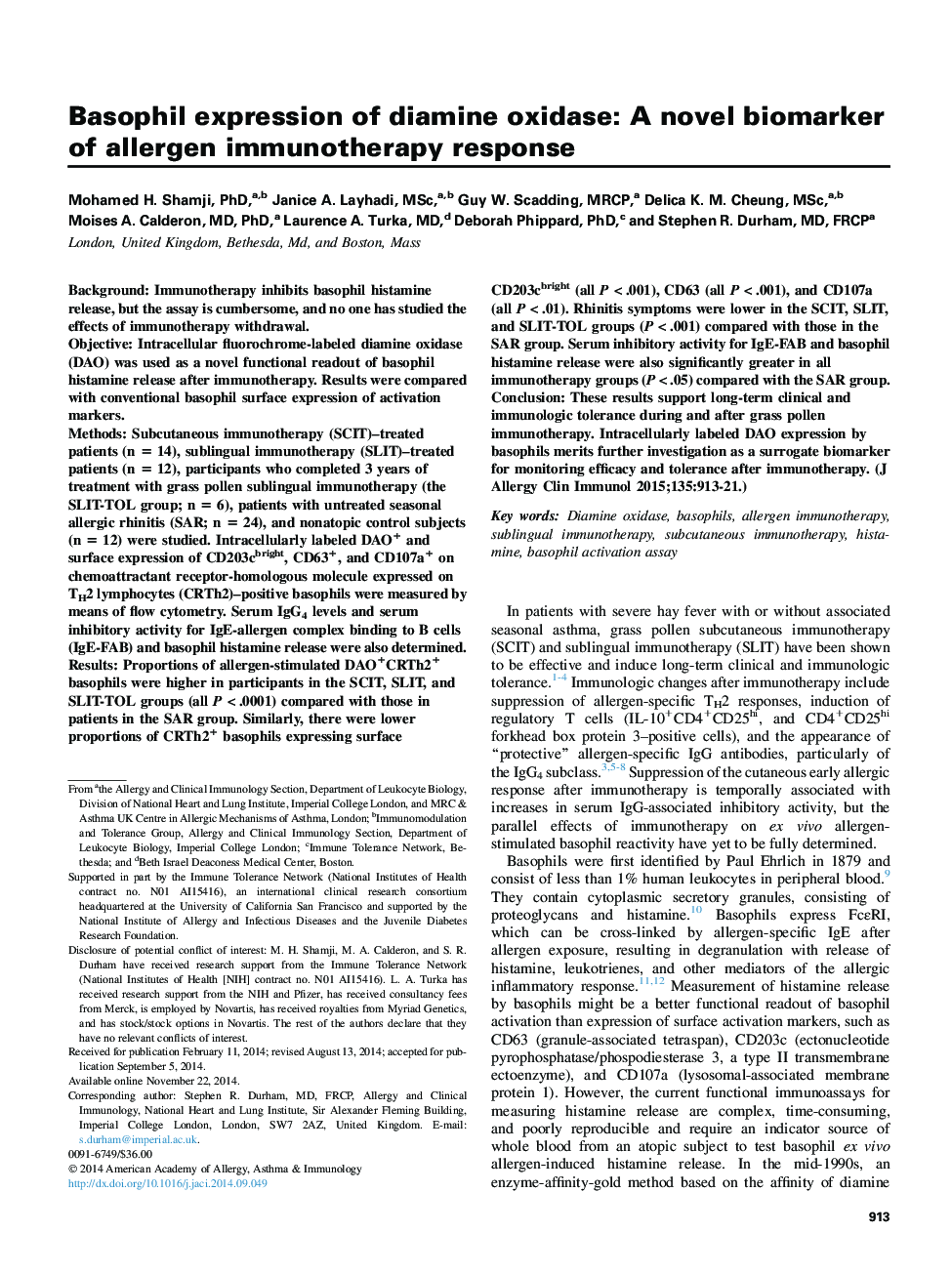| کد مقاله | کد نشریه | سال انتشار | مقاله انگلیسی | نسخه تمام متن |
|---|---|---|---|---|
| 6064070 | 1201858 | 2015 | 18 صفحه PDF | دانلود رایگان |
BackgroundImmunotherapy inhibits basophil histamine release, but the assay is cumbersome, and no one has studied the effects of immunotherapy withdrawal.ObjectiveIntracellular fluorochrome-labeled diamine oxidase (DAO) was used as a novel functional readout of basophil histamine release after immunotherapy. Results were compared with conventional basophil surface expression of activation markers.MethodsSubcutaneous immunotherapy (SCIT)-treated patients (n = 14), sublingual immunotherapy (SLIT)-treated patients (n = 12), participants who completed 3 years of treatment with grass pollen sublingual immunotherapy (the SLIT-TOL group; n = 6), patients with untreated seasonal allergic rhinitis (SAR; n = 24), and nonatopic control subjects (n = 12) were studied. Intracellularly labeled DAO+ and surface expression of CD203cbright, CD63+, and CD107a+ on chemoattractant receptor-homologous molecule expressed on TH2 lymphocytes (CRTh2)-positive basophils were measured by means of flow cytometry. Serum IgG4 levels and serum inhibitory activity for IgE-allergen complex binding to B cells (IgE-FAB) and basophil histamine release were also determined.ResultsProportions of allergen-stimulated DAO+CRTh2+ basophils were higher in participants in the SCIT, SLIT, and SLIT-TOL groups (all P < .0001) compared with those in patients in the SAR group. Similarly, there were lower proportions of CRTh2+ basophils expressing surface CD203cbright (all P < .001), CD63 (all P < .001), and CD107a (all P < .01). Rhinitis symptoms were lower in the SCIT, SLIT, and SLIT-TOL groups (P < .001) compared with those in the SAR group. Serum inhibitory activity for IgE-FAB and basophil histamine release were also significantly greater in all immunotherapy groups (P < .05) compared with the SAR group.ConclusionThese results support long-term clinical and immunologic tolerance during and after grass pollen immunotherapy. Intracellularly labeled DAO expression by basophils merits further investigation as a surrogate biomarker for monitoring efficacy and tolerance after immunotherapy.
Journal: Journal of Allergy and Clinical Immunology - Volume 135, Issue 4, April 2015, Pages 913-921.e9
